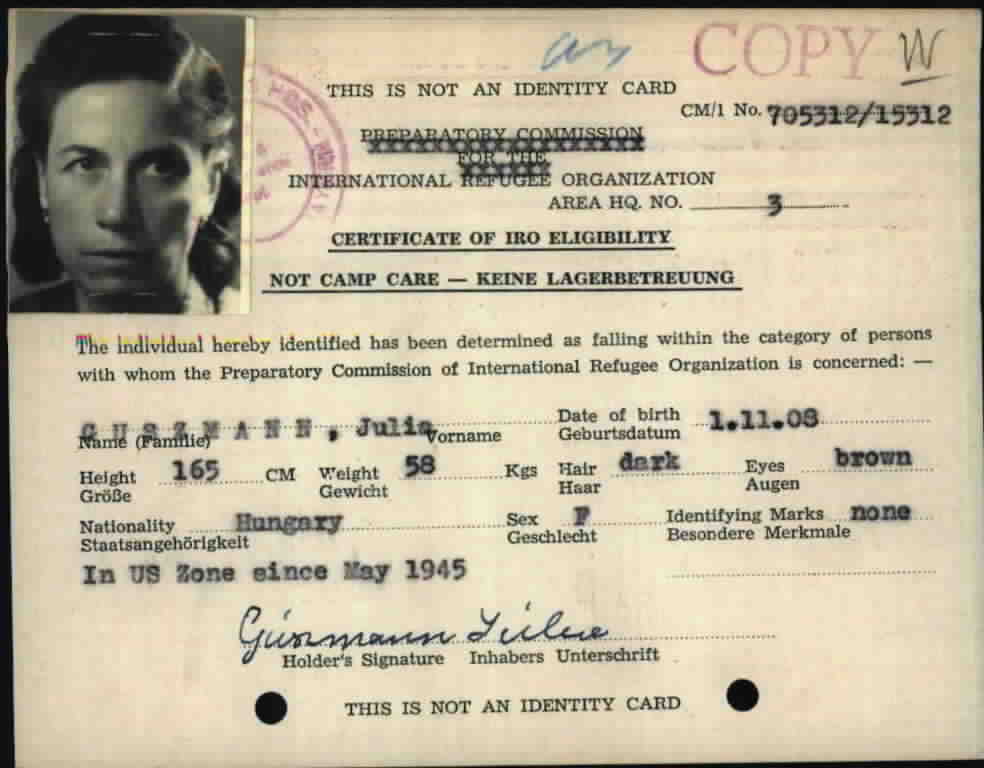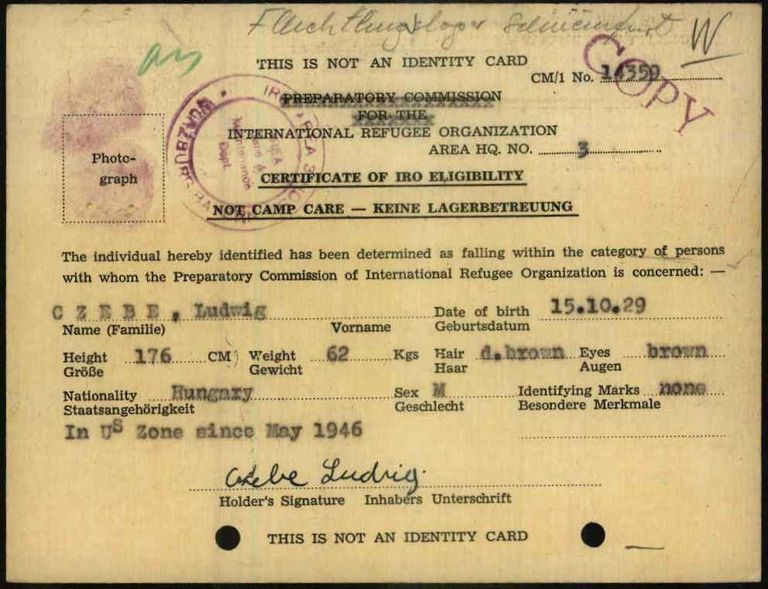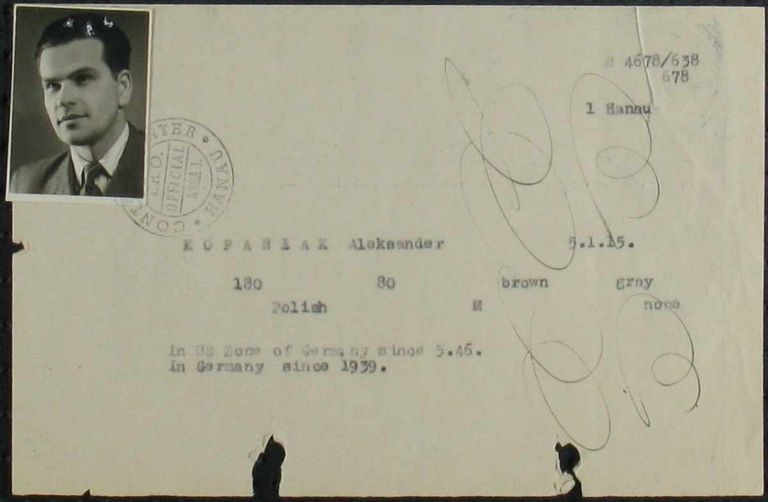Page of
Page/
- Reference
- Intro


Unfortunately, no instructions have yet been found explaining exactly how and for whom the Certificates of Eligibility were issued. Only the following basic information is available at present: IRO Control Center employees used the CM/1 applications to check whether a person was eligible for DP status and could be provided with support. If the IRO was responsible for a person, he or she received confirmation to prove it. If the person belonged to the group of so-called free-living DPs, i.e. DPs who were not looked after in a camp, but lived outside the camps in private accommodation, he or she received a Certificate of IRO Eligibility.
Unfortunately, no instructions have yet been found explaining exactly how and for whom the Certificates of Eligibility were issued. Only the following basic information is available at present: IRO Control Center employees used the CM/1 applications to check whether a person was eligible for DP status and could be provided with support. If the IRO was responsible for a person, he or she received confirmation to prove it. If the person belonged to the group of so-called free-living DPs, i.e. DPs who were not looked after in a camp, but lived outside the camps in private accommodation, he or she received a Certificate of IRO Eligibility.
Questions and answers
-
Where was the document used and who created it?
Official recognition as a DP depended on the results of the screening process carried out in the context of the IRO Care and Maintenance program. Based on the CM/1 applications, Control Center employees checked whether the applicants fulfilled the necessary conditions for DP status. For those DPs who fulfilled the conditions, but did not live in a camp, Control Center Officers issued a Certificate of Eligibility. All of the certificates examined thus far come from the US occupation zone. Researchers have yet to determine whether they only existed there or whether the certificates from the other zones have not been preserved.
- When was the document used?
The Certificates of Eligibility date back to the period when the IRO/PCIRO was responsible for caring for the DPs. This means that the certificates were issued between July 1947 and December 1951.
- What was the document used for?
After the war, DPs needed documents in order to be able to prove that they had been officially recognized as DPs and were therefore eligible to receive support from the IRO. For this purpose, DPs in the camps were given a DP identity card that was valid in the camps. However, many people who had been given DP status lived outside the camps in private accommodation. The IRO Control Centers created Certificates of Eligibility for these so-called free-living DPs. This enabled DPs to prove that their status had been reviewed in the context of the IRO’s Care and Maintenance program and that they had fulfilled the necessary conditions to be recognized as DPs. This rule was apparently relaxed later on – possibly from May 1950 onwards – as the Arolsen Archives also hold Certificates of Eligibility for people who were additionally issued with DP identity cards.
All the free-living DPs whose CM/1 applications had been approved received Certificates of Eligibility. Although family members who are also mentioned on the CM/1 application were also granted DP status, they did not receive their own Certificates of Eligibility. The certificate was only issued to the head of family in whose name the application had been submitted and also decided upon.
The exact procedure for issuing the certificates is still unclear, but the Control Center Officers probably always created two versions: an original, which remained with the DP, and a copy, which was kept by the IRO. Once the IRO had been dissolved, the Control Centers sent these copies to the International Tracing Service (ITS), the predecessor to the Arolsen Archives.
- How common is the document?
It is not possible to say how many Certificates of IRO Eligibility have been preserved in the Arolsen Archives. This is because ITS employees sorted the certificates following an alphabetical-phonetic system and filed them together with other documents in the postwar card file (Nachkriegszeitkartei, Collection 3.1.1.1). This made it easier to search for references to individual people, but it also means there is now no way of knowing how many certificates have been preserved. But in the near future, modern computer technology will find the answer: clustering techniques will make it possible to automatically identify and count these certificates and other types of documents.
- What should be considered when working with the document?
Unfortunately, it is not yet known exactly how the Certificates of IRO Eligibility were used. Most importantly, no instructions have yet been found that would help clarify the historical context. If you have any additional information about the certificates, we would appreciate it very much if you could send your feedback to eguide@arolsen-archives.org. New findings can always be incorporated into the e-Guide and shared with everyone.
Help for documents
About the scan of this document <br> Markings on scan <br> Questions and answers about the document <br> More sample cards <br> Variants of the document



